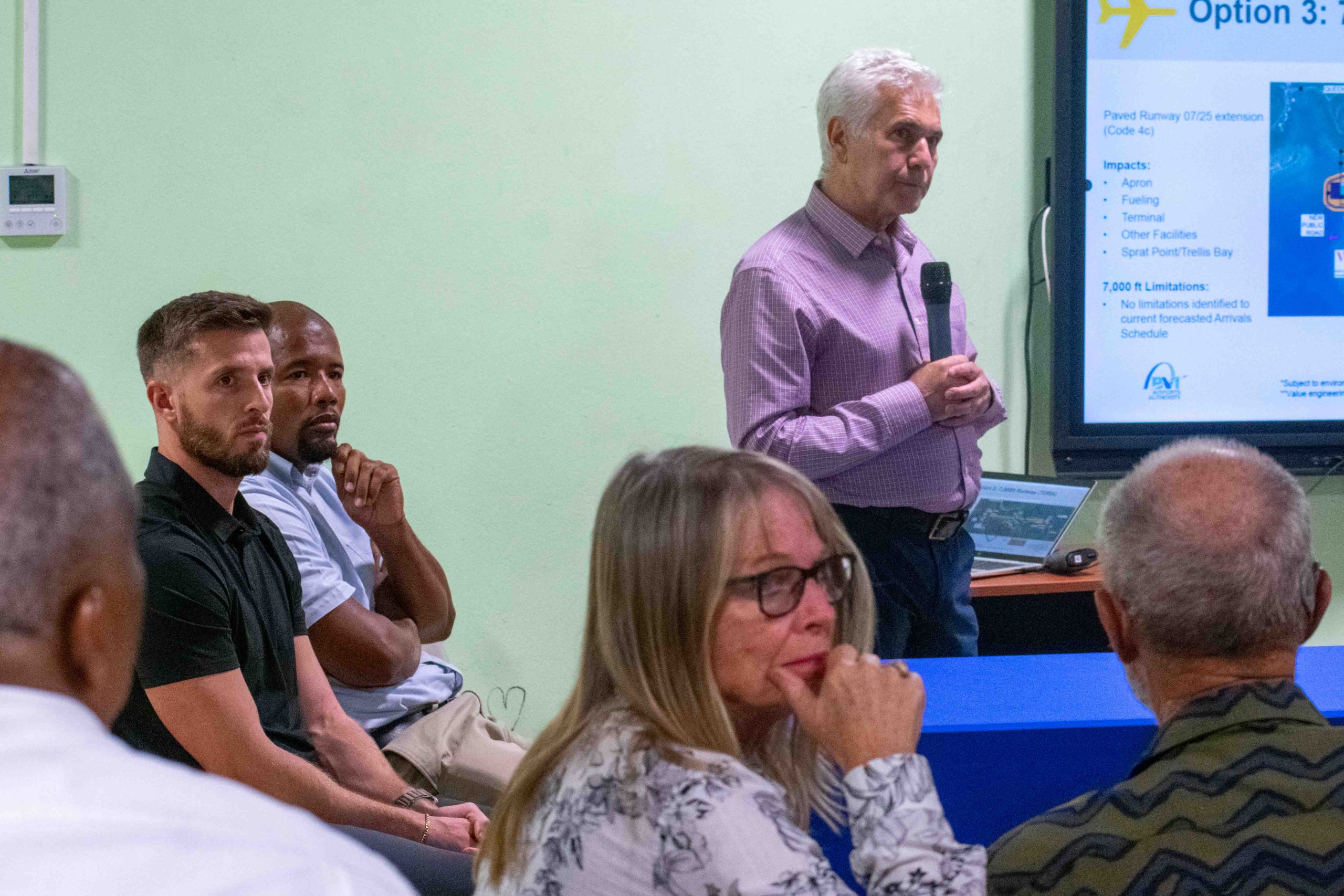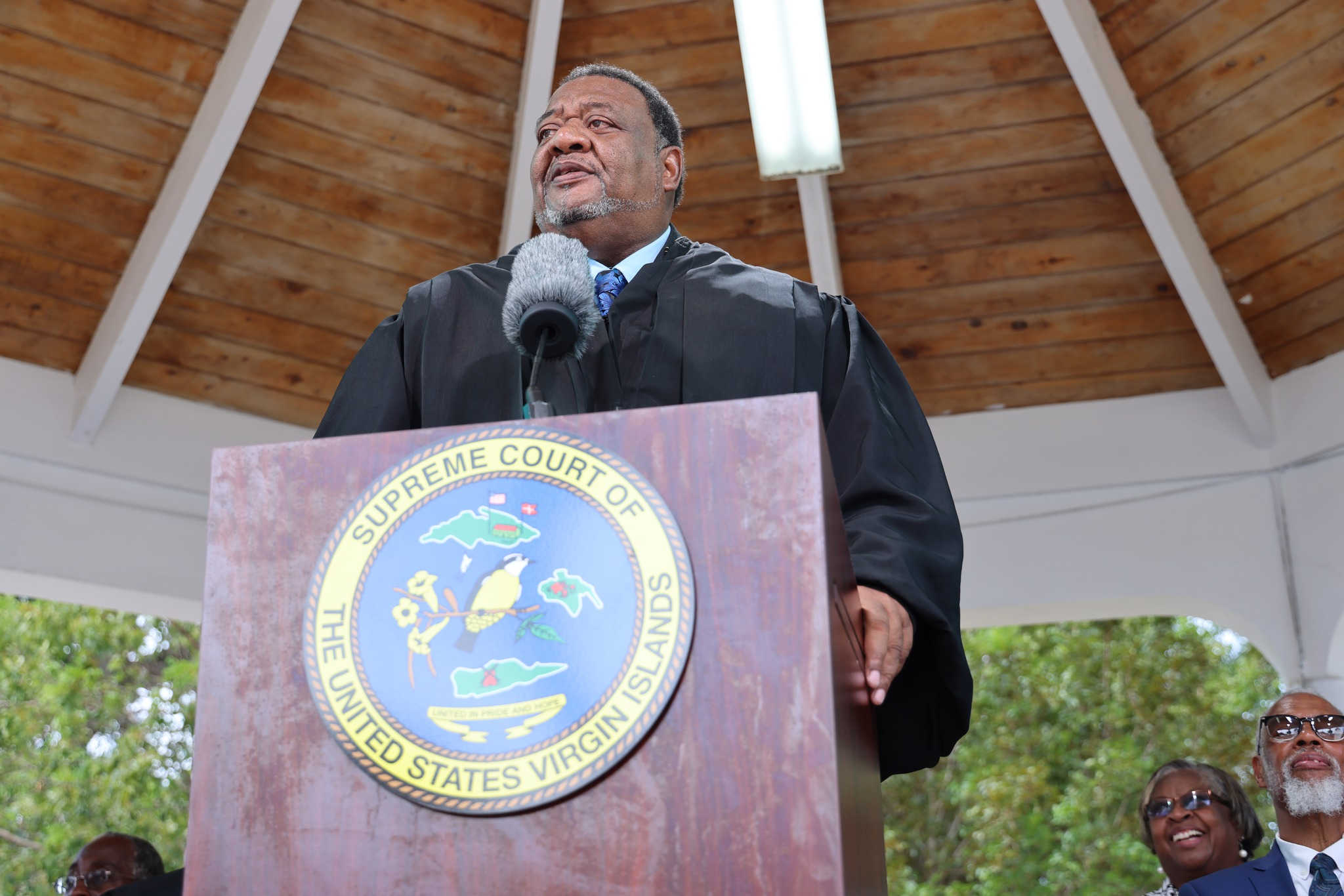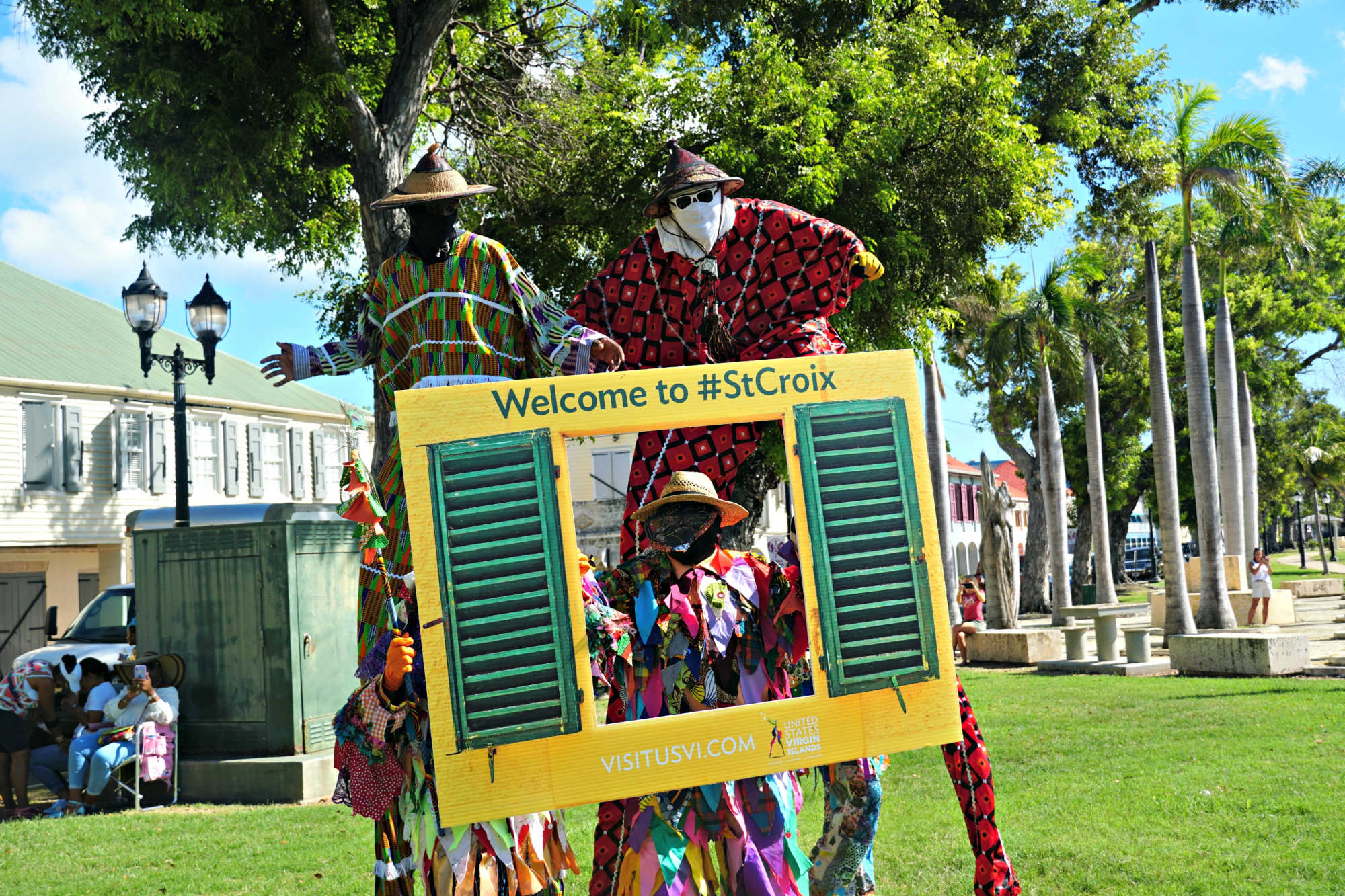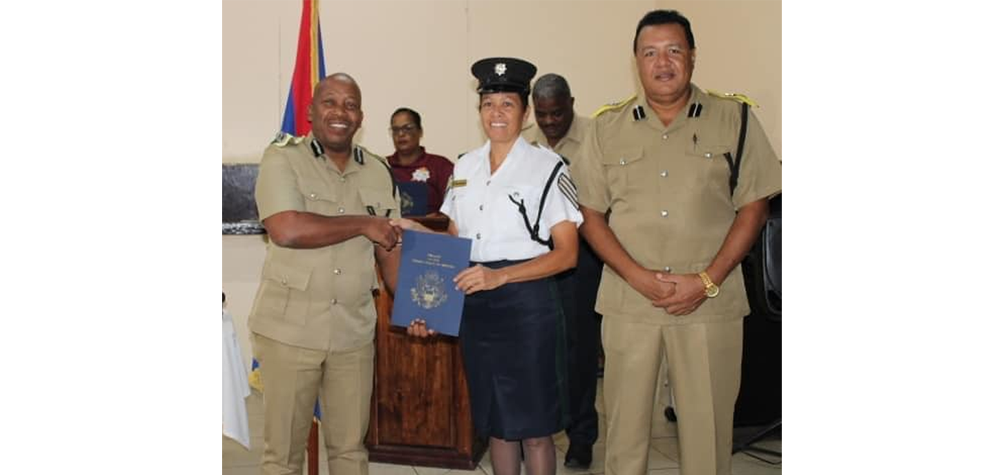

The government’s latest proposals to expand the runway at the Virgin Islands’ main airport were unveiled at a public meeting the evening of Nov. 26, but major details about the project still haven’t been disclosed.
That didn’t sit well with several attendees, who want more information about the project’s feasibility and environmental impact. Without such specifics on hand, some of them expressed concerns that a longer runway could destroy endangered coral and largely cut off Trellis Bay’s tidal flow, converting it into a “dead bay” that would harm its sea life and busy yachting community.
Others, however, agreed with government officials that the project is vital for the VI’s future economic development and prosperity and should proceed as soon as possible.
Meanwhile, a portion of a taxpayer-funded business case that reviews such issues in greater detail has been completed but is being withheld from public view for now.

Runway options
The three expansion options described at the meeting would extend the 4,646-foot runway at Terrence B. Lettsome International Airport to either 6,300, 6,500 or 7,000 feet in order to offer more direct flights to the United States and possibly further abroad.
Speaking to a crowd of about 30 people gathered at Elmore Stoutt High School, government officials, representatives of the BVI Airports Authority, and the consultants they hired gave an update on the proposed expansion, which would be the most expensive public project in Virgin Islands history.
Clive Smith, director of special projects for the BVIAA, unveiled the options, all of which also involve upgrading the passenger terminal, improving the airport’s refuelling capabilities, and expanding the runway apron used for aircraft parking.
The 6,300-foot option would allow for additional direct flights to the US cities of Miami and Charlotte, he said.
The longer options, he said, would allow for more distant travel with a greater diversity of aircraft types, including the commonly used Boeing 737 and the Airbus A-319 and A-320.
Mr. Smith also presented two other proposals he said are under consideration: the “do minimum” option, which would merely expand the terminal and apron, and the “do nothing” option, which would make no changes to the existing airport.
These two options, however, appear unlikely to be chosen given that Premier Natalio “Sowande” Wheatley, who briefly attended the Tuesday meeting, has strongly advocated for the expansion and said he believes the VI has “passed the stage” of deciding whether or not the project should proceed.
Airlines’ choice
Ms. Smith also said that the BVIAA is in discussions with three major airlines about the runway expansion, but he declined to name the companies. Ultimately, he noted, it is airlines, not regulators or the BVIAA, that will decide whether or not to fly to the VI.
“We’re still talking to the airlines and figuring out what lengths they would want to get to what markets,” he said.
Currently, the airport can accommodate smaller planes: the ATR-72, a 72-passenger turboprop aircraft, and regional jets like the Embraer E-175, which American Airlines introduced to the territory in 2023 to begin daily flights to Miami.
Last year, about 181,000 passengers used the airport. It’s not yet clear how much that number would grow if the expansion proposals are adopted.
Attendees at the meeting were told of two key documents that are guiding the expansion process: an update to the BVIAA’s master plan and a “strategic business case” that United Kingdom officials are requiring before giving their blessing to the expansion.
The business case, which is being produced by consultant KPMG (BVI) Ltd., covers the justifications for the “strategic,” “economic,” “commercial,” “financial” and “management” cases for the project, officials have said.
The first part of the study was recently completed, but despite being approved by Cabinet in September, the government has refused to release it.
Mr. Smith, however, said that the full business case — which when complete is set to include detailed financial projections, demand forecasts and a host of other data — will eventually be made public along with the updated master plan.
Both documents, he said, are slated to be complete early next year.

Flight map
Jeffrey Seider, vice president of global advisory for Canadian consulting firm WSP Global, which is completing the master plan update, presented attendees with a map of North America with several red concentric circles with Beef Island at its centre. The circles represented the maximum ranges for various types of fully fuelled jets to fly between Beef Island and cities including Houston and New York in the United States, Toronto in Canada, and Lima in Peru.
Mr. Seider then showed a chart of commonly used jets flown by US airlines and compared their ranges to the capabilities of the 6,300-foot, 6,500-foot and 7,000-foot expansion proposals.
The 7,000-foot runway allows for the most flexibility in aircraft type and for the longest distances. The shorter extensions would allow for direct flights to fewer cities with a more limited number of aircraft, he said.
Forecasts
Mr. Seider added that analyses of passenger demand and “peak hour” forecasts of likely air traffic are being developed as part of the planning process, as is a financial analysis of the revenue the expansion may bring to the BVIAA.
The authority currently relies on an annual grant from the VI government of around $2.5 million to subsidise its operations, BVIAA Managing Director Kurt Menal said.
Following completion of the master plan update and the business case, Mr. Seider said, the next step will be to perform an updated environmental impact assessment.
Eastward expansion
Ultimately, he added, any runway extension will have to proceed eastward toward Trellis Bay due to obstacles in the flight path to the west.
“We have a challenge: We cannot effectively move to the west. We can’t effectively push the runway this way, because you’ve got a hill in the background,” he said.
The 7,000-foot runway, however, would narrow the mouth of Trellis Bay to a 486-foot channel that would also bring restrictions for seagoing vessels, Mr. Seider said, adding that the shorter extension options would narrow the bay’s opening to a lesser extent.
At one point in his presentation, Mr. Seider pointed to a depiction of a proposed “safety cone” at the eastern end of the runway.
“You can’t have a yacht that’s going to be sitting here when there’s an aircraft taking off, so what happens is both the ferries and the yachts will come in this direction to get into the bay,” he said, referring to the approach that the boats would make into the bay.
Tidal flow
While echoing other officials’ contention that no expansion option has been chosen yet, Mr. Seider also ruled out two ideas that were previously proposed over the past decade: constructing the runway extension on trestles to preserve water flow or reorienting the runway to change the angle it enters the ocean.
Both of these ideas, he said, would be prohibitively expensive.
Instead, the extension will have to be built along its current orientation on imported rock embedded with culverts designed to preserve the current water flow. Additionally, he said, a section near the runway would have to be dredged.

Concerns
But Emma Paull, the programme director for the Trellis Bay-based business BVI Watersports, argued that such culverts are unlikely to work properly.
“It will silt back up again due to the tidal flow,” she said. “It will suck in all of the sargassum weed into Trellis every time we have a summer and turn the whole of Trellis into the most disgusting area in the world ever.”
She added that endangered elkhorn coral present in the area would likely be destroyed by the dredging.
Fellow Trellis Bay business owner Aragorn Dick-Read also questioned the contention that a bigger airport would automatically lead to economic gain.
“That 7,000-foot extension doesn’t necessarily give us growth,” he said. “It takes away a lot from our environment, including the functionality of one of our central bays.”

Transparency concerns
Another attendee, Robert Wassell, said he felt “starved of information” about the project because the completed part of the business case for the project hasn’t been made public.
“The main question that the people of the BVI are going to want to know is: Do we need it, first off?” he said. “In order to make that determination, we’d need to see some figures. We’d need to see the passenger forecasts. We need to see the business case. We need to have a look at the environmental impact.
These things need to be divulged in public so proper public support can be divulged for this project.”
Mr. Wassell also expressed concerns about the project’s costs, which he said could create “inter-generational debt.”
The premier responded to his concerns.
“We could have just forged ahead in a particular type of way, but I believe we’ve been conducting this process in the most responsible and most transparent means possible,” he said.
Mr. Wheatley added that leadership involves balancing competing concerns and that one of his government’s goals is bringing in additional revenue through enhancing tourism, which requires a bigger runway.
“Just by adding that direct flight from Miami, we’ve seen exponential growth,” he said.
Mr. Wheatley did not directly address the project’s potential cost, but earlier in the meeting Mr. Seider said it is “too early” to determine that information.

Project proponents
While some attendees expressed criticisms or concerns about the proposals, others, like Clarence Faulkner, spoke of the need to move forward with the project to sustain the VI’s economic growth.
“Is there anywhere else in the BVI that accommodates such a project like this that helps solve all of the issues that have been raised?” Mr. Faulkner asked.
Mr. Smith, of the BVIAA, replied, “That’s a good question. Do you have any suggestions?”
“That’s my point,” Mr. Faulkner said, drawing laughter.
VG meeting tonight
A second public meeting on the project was scheduled to take place Nov. 27 afternoon at the Francis Lettsome Primary School in East End.
The three-meeting series will wrap up Nov. 28 on Virgin Gorda, with a meeting starting at 5:30 p.m. at the Catholic Community Centre.
Rushton Skinner contributed to this article.
Related News

Virgin Islands Supreme Court Gains First New Justice in 18 Years: Harold Willocks

Funding Questions and Infrastructure Needs Stall Frederiksted Harbor Nights Bill in Committee

Public Notice: Invitation for Bids for Church Property Fencing Project

